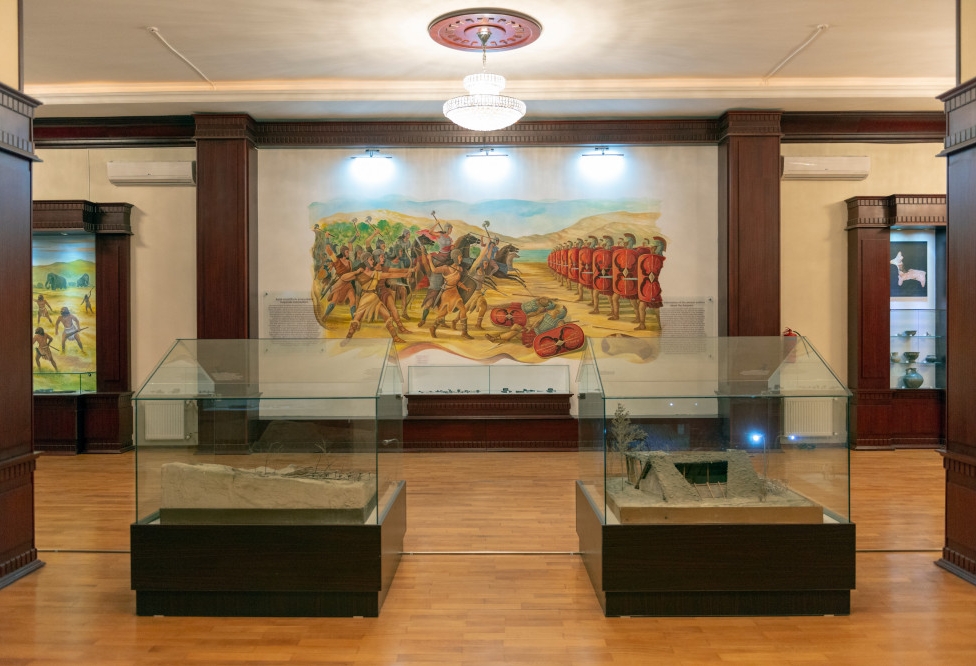



Mingachevir - catacombs, archan and peacocks

Baku, March 9, AZERTAC
To begin acquaintance with Mingachevir is best from visiting the City History Museum. The museum was founded on January 11, 1968.
The two-storey building of the museum covers an area of 810 square meters. There are more than 15,000 exhibits reflecting the life and development of Mingachevir from antiquity to the present day. The most ancient exhibitions are material and cultural examples belonging to III - I millennium BC.
During the period from 1946 to 1953, prominent Azerbaijani archaeologist Saleh Gaziyev conducted archaeological excavations in Mingachevir on the south side of the Bozdag mountain, during which was discovered about 20,000 samples of material cultural heritage related to III-II centuries BC. Fifty of the items found were left in Mingachevir and formed the basis of the exposition of the City History Museum.
There are two pavilions in the museum: in one of them there is history, from the ancient times to the beginning of the 20th century, and the exhibits of the other reflect the glorious history of the construction of the Mingachevir hydroelectric power plant.
In particular, a separate installation in the first pavilion is devoted to the lives of ancient people - Neanderthals, who lived in caves and used primitive tools of labor. It is interesting that their life expectancy reached 30 years for men and 35 years for women.
Further here you can get acquainted with objects of everyday life and decorations, working tools, hunting weapons used by people who lived on this territory in the third and second millennia BC.
Of great interest are rare examples of pitchers buried in ancient times in some regions of Azerbaijan: people were buried in large jars of red clay buried at a depth of 2-3 meters. During the excavations, over 200 such graves and 4 burial mounds were investigated. According to the notions of the afterlife of people of that period, household tools, food and water containers were also put in pitchers, and large domestic animals such as bulls or horses were buried nearby.
Here you can personally see one more sample of ancient burials - catacombs made from the Archan plant, the wood of which has a peculiar aroma, so strong that it is felt even after so many years. Nowadays, the trees of this breed have survived only in the forests of Gabala. Catacombs were common in ancient times and in the early Middle Ages, for the burial of representatives of the nobility.
In the Middle Ages, Mingachevir was distinguished by a high level of development of craftsmanship. Basically it was pottery, the production of textiles, jewelry and copper products. On one of the stands of the exhibition you can see the tools of labor and household items made by a master of copper.
In the museum you can get acquainted with the monument of the Albanian period discovered during excavations, which, apparently, was part of an ancient cult structure. On the obverse of the monument, made of soft yellowish stone, there is a symbolic image of two peacocks facing the flower, above which is carved an Albanian inscription of 52 letters, the meaning of which has not been deciphered so far.
In the first pavilion, you can also trace the evolution of the human dwelling - first these were dugouts, which were gradually replaced by houses of a modern type. You can see samples of national men's and women's clothing, etc.
A separate stand shows the diversity of Mingachevir's flora and fauna: the species of fish inhabiting the Kura and animals that were encountered in the once lush forests here.
Azerbaijan, Pakistan discuss educational cooperation
UNEC included in same group as world universities in international ranking
Memorandum of Understanding on establishing Türkiye-Azerbaijan University approved - ORDER
Türkiye’s 1st indigenous Earth observation satellite completes 1st year in space